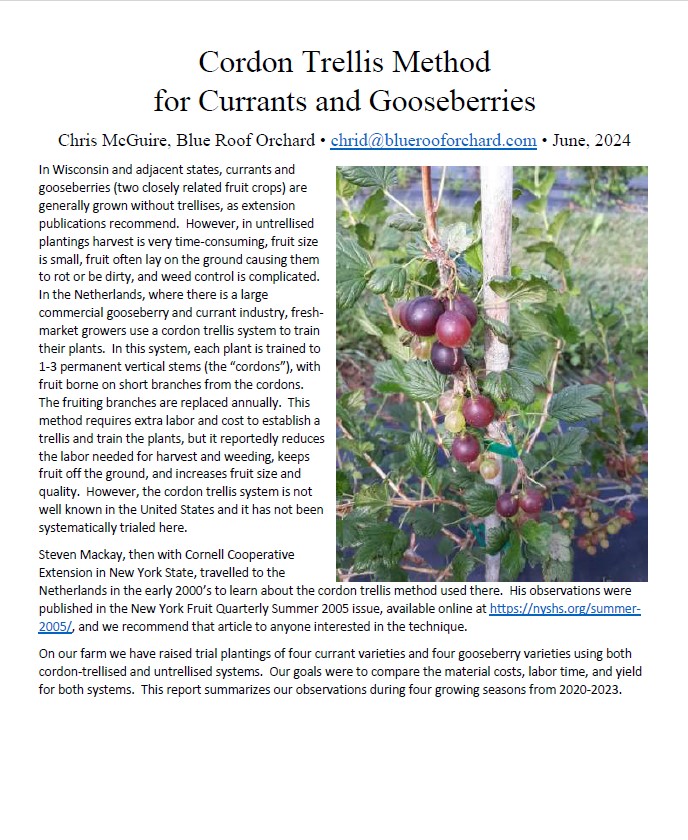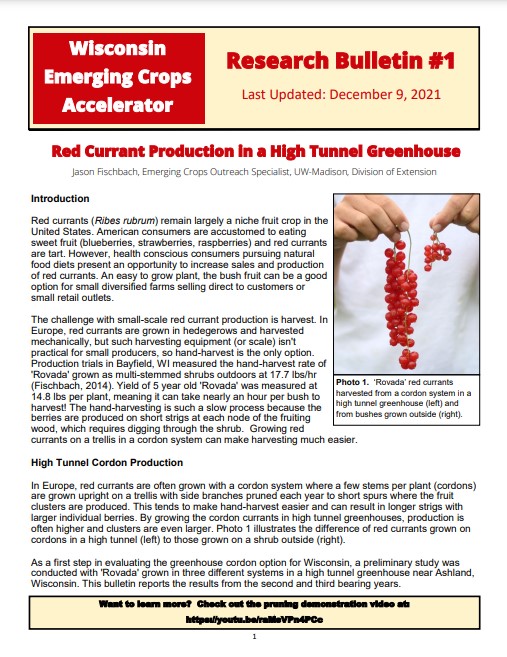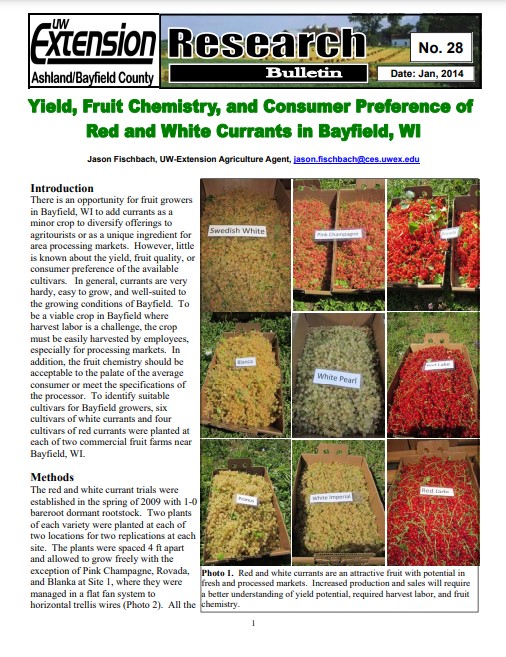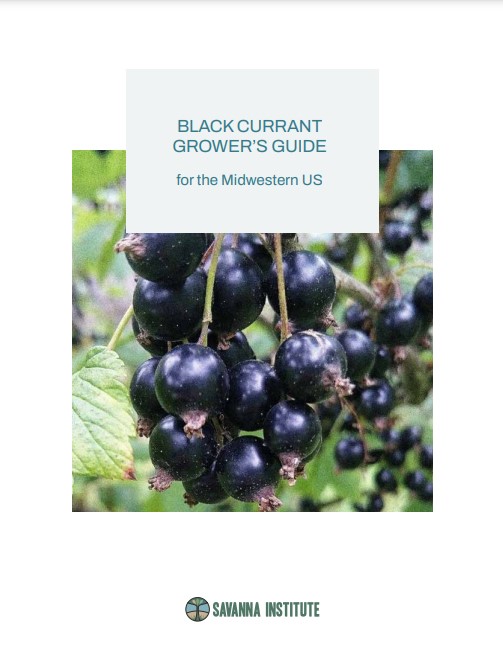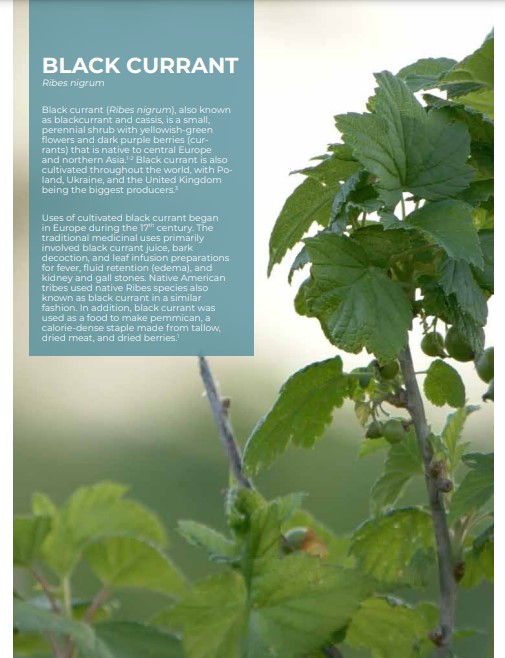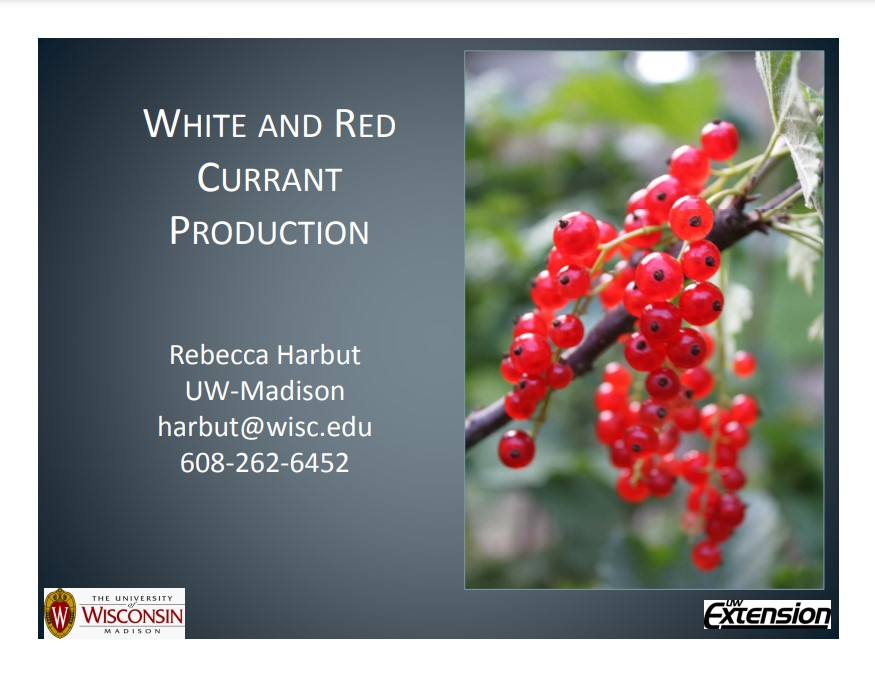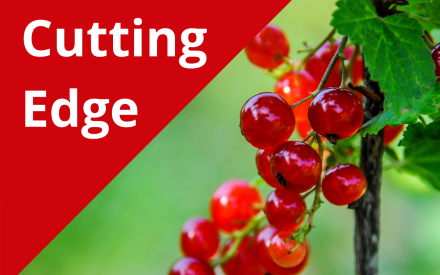Currants

CURRANTS
Crop Profile
Get Involved!
Red, white, pink and black currants all belong to the Ribes genus within the Gooseberry family. Black currants belong to Ribes nigrum, while red, white and pink currants are Ribes rubrum.
Currants are an extremely cold hardy crop native to northern latitudes of Europe, Asia and North America. Currants are commonly grown in Scandinavia and northern Europe with Russia and Poland producing the vast majority of the world’s crop. Currants were brought over from Europe to the United States in the early 1800s and were widely grown in New England, especially New York, in the late 1800s.
The fate of currants in the United States began to change in the early 1900s with the introduction of white pine blister rust. Plants in the Ribes genus, especially black currants, served as a host for the fungus and threatened the white pine timber industry. A federal ban on the cultivation of currants was implemented in the 1920s and remained in place until 1966. Throughout the 1930s and into the 1940s, thousands of Civilian Conservation Corps members participated in a campaign to eradicate plants in the Ribes genus. Today, the laws regarding the cultivation of currants today vary state to state. In the Midwest, Michigan and Ohio still have restrictions on the varieties of black currants that can be grown.
Currants are rising in popularity but remain a niche crop in the United States. In 2017, the latest year for which there is data, there were over 500 acres of currants being grown with Connecticut, New York and Washington leading the way. Black currants are most widely grown because of their ease of production, processing capabilities, and nutritional qualities.
Black currants are considered a processing berry with most going to juice production and others for jam, wine and liqueur. They are considered a superfood with three times more Vitamin C than oranges and high levels of antioxidants. Red and white currants are less nutritious but more palatable for fresh eating, even though they are a tart berry. Red and white currants are excellent for baking and make good jams and jellies but do not juice well. All currants freeze well, especially black currants, and store well in the fridge.
Production
Research Status and Priorities
Markets
Plant Material
Resources and information
Read
Watch
(Chris McGuire, Blue Roof Orchard)
(Jason Fischbach, UW-Madison)
(Eric Wolske, University of Illinois, and Chris McGuire, Two Onion Farm)
(Eric Wolske, University of Illinois)
Listen
More Resources
Cornell University – Gooseberries and Currants
North Dakota State University
University of Minnesota Extension
University of Wisconsin-Madison Fruit and Nut Compass (financial planning tool)
Wisconsin Berry and Vegetable Growers Associations
Wisconsin Fruit (UW Fruit Program)

